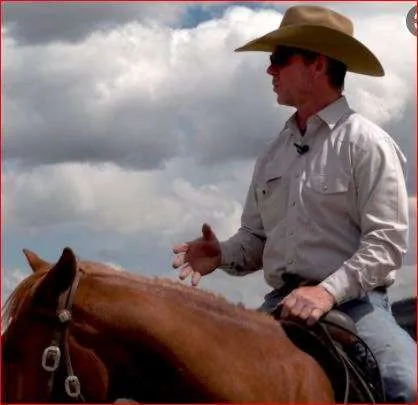“A positive start is the key to an outstanding finished working horse.”
However, that requires skill and finesse, according to Chris Cox, professional horseman and clinician.
At a recent colt starting event, the Mineral Wells, Texas, trainer revealed tips to prepare horses for a performance career.
It is vital to start a young with soft cues every single time and only increase as needed, Cox emphasized.
“Communicate to your horse by gently showing the horse what you’d like it to do,” he said.
“Feel in your own body persuades the colt to follow your ideas.
“Do not ever jerk on a horse as it makes him defensive,” Cox pointed out.
Still, if a horse isn’t catching on, a firmer cue will help the horse understand boundaries. “When a horse doesn’t respond to multiple requests, a sharp reprimand like heavy heel force will generally correct him,” Cox said.
More extreme correction is only necessary when a handler needs to defend himself from a horse kicking, biting or pawing.
One of the worst things is to let a young horse become bored. “These colts want you to move forward on them,” Cox said. “So you must have short sessions in a learning rhythm.
“Their mind operates so fast, and you must keep up with that,” the clinician continued. “If you get too lethargic and slow, their mind gets to looking for sourness.”
This is true for the initial saddling and riding process as well. “Get your young horse out on the range,” Cox encouraged. “Provide your horse with fresh obstacles in the arena like pushing steers, crossing bridges, even just swinging a lariat.”
Feet of the horse must be controlled. “Their head has nothing to do with their feet initially,” Cox explained. “The handler must concentrate on the horse’s fee connecting the rein to their feet.”
Flexing the horse’s head around with the young horse just standing can create a dangerous situation. “It is vital that all four of the feet move so the horse doesn’t get stuck,” Cox said.
“If feet get stuck then the rest of his body becomes stiff which could result in a potentially explosive setup.”
When a young horse gets rambunctious, “A lot of times, it’s because their feet are stuck,” Cox said. “Once moving, it must be all feet, not just one or two.”
After a horse is going comfortably under saddle, the final piece of the puzzle is developing more “feel” while being ridden.
Again stiffness in the horse usually indicates a problem in the feet.
“Never address resistance like a tossed head by pulling on the horse’s face,” Cox said“Instead ask the horse to soften and move their feet smoothly.
“When a rider jerks on their young horse’s head, they’re training them to have to raise their head the rest of their lives,” Cox said. “It’s not about their head it’s about controlling those feet.”
CUTLINE
Feel in the rider’s body persuades a horse to follow his directions, according to Chris Cox, horse trainer-clinician.





